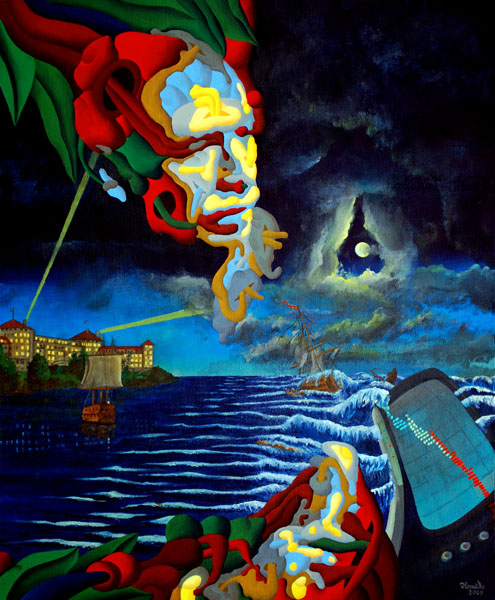

Werner Horvath's paintings concerning the worldwide financial crisis:
"Adam Smith and the invisible hand of the market" (left). "John Maynard Keynes and the secure harbour of Bretton Woods" (right).
Both oil on canvas, 60 x 50 cm, 2009.
On the one hand these pictures are portraits of the famous economists, on the other hand they also include some of their theories.
The invisible hand is a metaphor coined by Adam Smith in his work The Wealth of Nations in 1776. Smith wanted to show that, in a free market, an individual pursuing his own self-interest tends to also promote the good of his community as a whole through the principle he called "the invisible hand". You can see it in the picture: While nobody is standing in front of the steering-wheel, one can see the guiding hands as shapes of the shadow.
On the contrary John Maynard
Keynes (1883 - 1946) advocated interventionist government
policy, by which the government would use fiscal and montary measures
to mitigate the adverse effects of economic recessions and depressions.
On his suggestion, the United Nations Monetary and Financial
Conference, commonly known as Bretton Woods
conference was held to regulate the international monetary
and financial order after the conclusion of World War II.